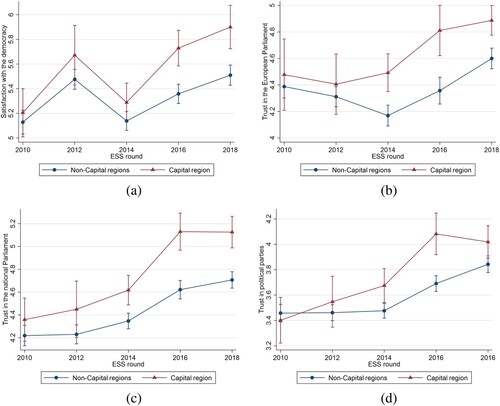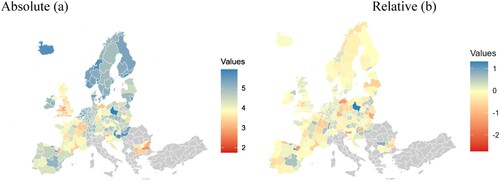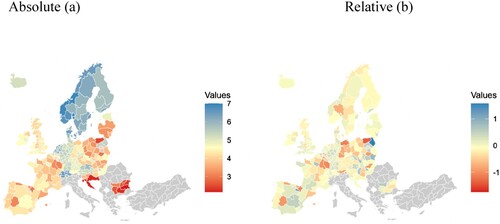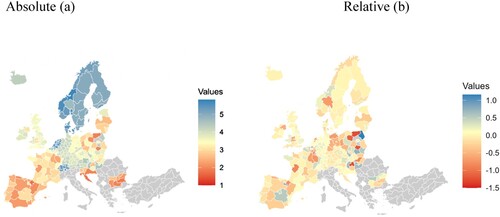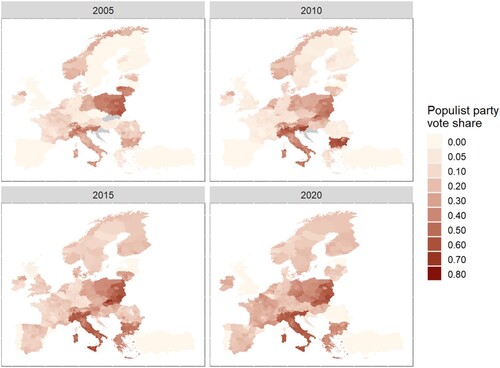Figures & data
Figure 1. Political discontent: concept, objects, expressions and dataset examples.
Note: EU-NED refers to the European NUTS-Level Election Database.
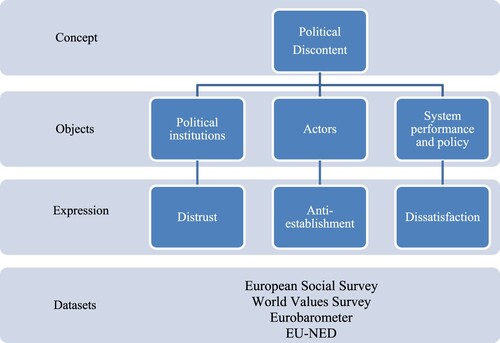
Table 1. Overview of contributions.
Figure 5. Satisfaction with democracy: Absolute (a) Relative (b).
Note: The right panel on Figures 2–5 shows absolute regional variation in political attitudes, while the left panel shows relative variation compared to the national average. The indicators of political discontent are based on data from European Social Survey (ESS) Round 9 (2018).
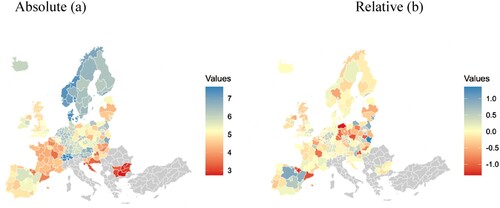
Figure 6. Polarisation in political attitudes (Capital regions vs non-capital regions): Satisfaction with democracy (Capital region vs other regions) (a) Trust in European Parliament (Capital region vs other regions) (b)Trust in national parliament (Capital regions vs other regions) (c) Trust in political parties (Capital region vs other regions) (d).
Note: The indicators of political discontent are based on data from European Social Survey Rounds 5-9 (2010, 2012, 2014, 2016, 2018) in Austria, Belgium, Switzerland, Czech Republic, Germany, Denmark, Estonia, Spain, Finland, France, UK, Ireland, Lithuania, Netherlands, Poland, Portugal, Sweden and Slovenia. In Denmark and Austria, data was not available for all five rounds of the European Social Survey (ESS). The figures are controlled for country level variation.
